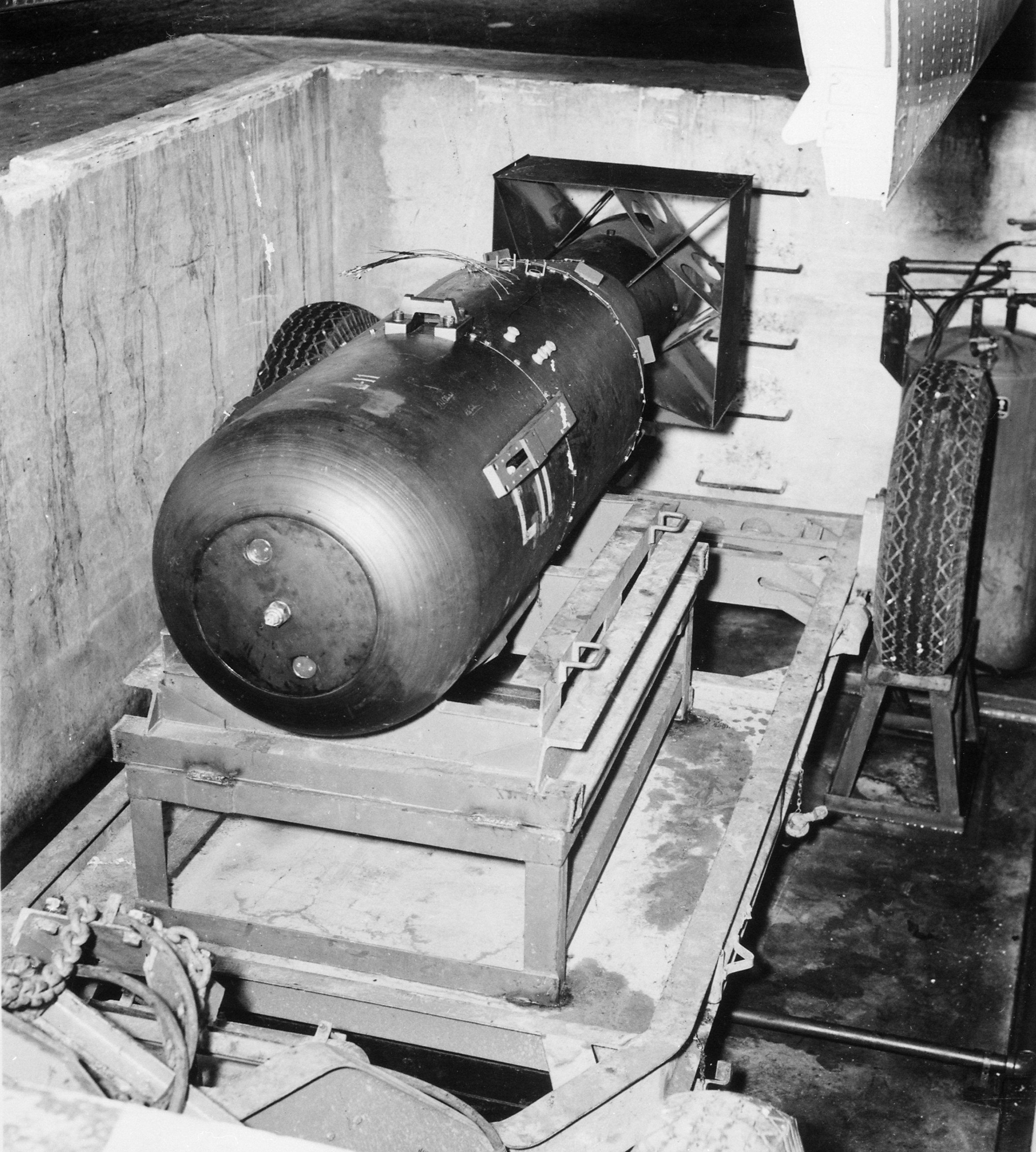At 8:15 Hiroshima time, the B-29 Enola Gay commanded by Colonel Paul Tibbets dropped a single bomb over the Japanese city. It was the lead of three planes, the other two full of instruments and recording devices to see what would come of the experimental “atomic” bomb code named “Little Boy.” From the explosions in at Trinity in New Mexico, expectations were immense. President Truman hoped that the new weapon would end the war quickly, giving enough cause that the Japanese would surrender as outlined in the Potsdam Declaration issued on July 26.
The bomb fell, but it did not detonate. Scientists and historians speculate continually on what went wrong, and theories range from improperly deactivated safety devices, lackluster uranium, sabotage, or simply the hand of God. It smashed impotent into a row of offices near the Shima Surgical Clinic. The Japanese, who had spotted the three planes on radar and assumed they were merely a reconnaissance mission, were confused by the attack. They collected the remains of the bomb that afternoon and returned them to military headquarters for investigation.
When the Japanese discovered radiation burns on the handlers of the uranium, their military investigators and scientists determined the bomb to be a sort of “extermination” weapon. As reports of this came to the war council and Emperor, the government began to fear for what an invasion of the home islands by such barbarians would bring. Some felt the need to surrender to terms to prevent annihilation of the people, and others felt all the more the need to defend themselves.
Meanwhile, in America, Truman was furious. Billions of dollars and countless man-hours had been spent developing, to quote Truman, “a damned fool newfangled” weapon that did not work as it should. He shelved delivery of the “Fat Man” bomb and prepared for a bloody military invasion. His only solace was that the Russians would be with them since Foreign Minister Molotov had declared war on August 5.
As Hirohito considered surrender, the Staff Office in the Ministry of War considered otherwise. They convinced him that they could bloody the Allies into an agreeable treaty. Bracing for invasion, Japan placed itself under a military state of emergency. Soviet tanks rolled through China and Korea while the Allied Fleets in the Pacific and on Okinawa prepared for an October landfall on Kyushu dubbed Operation Olympic. During the winter, Hirohito could not stand to see the suffering of his people any longer, and he surrendered December 29, 1945, with a clear depiction of his own power over the home islands.
While the Soviets occupied Korea and much of China, Britain and the United States occupied southern regions of the former empire. War criminals were brought forward, and the Emperor worked handily with foreign diplomats, though they were kept out of Japan proper as much as possible.
The atomic bomb remained science fiction for the military as much as death ray weapons and mind control. Though the Cold War saw more experimentation into nuclear super-weapons, they were rarely brought into the public scene. Instead, the world was more concerned with the balance of power as seen between the East and West in Europe as well as disputes between North and South China (which would see the prolonged Chinese War from 1955 to 1975) and heroic waterborne escapes from Soviet Korea to nearby Imperial Japan.
--
In reality, the atomic bomb did detonate as it should 1,900 feet above Hiroshima. The second at Nagasaki showed that the United States could unleash the weapon anywhere (although a ruse, since there were no more bombs prepared). Citing the atomic bomb as “a new and terrible weapon with the power to destroy many innocent lives and do incalculable damage” and noting the strength of the coming Soviet invasion, the Emperor chose surrender on August 14, 1945.

No comments:
Post a Comment